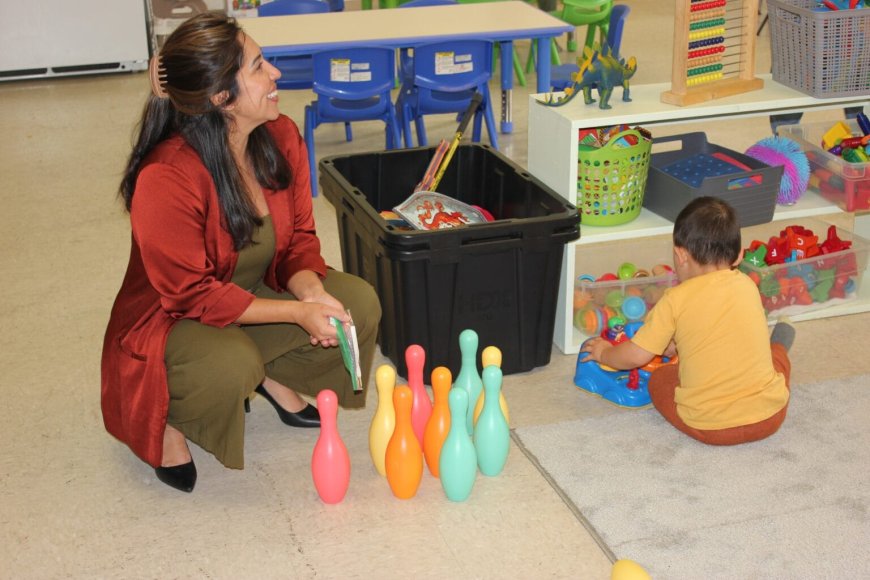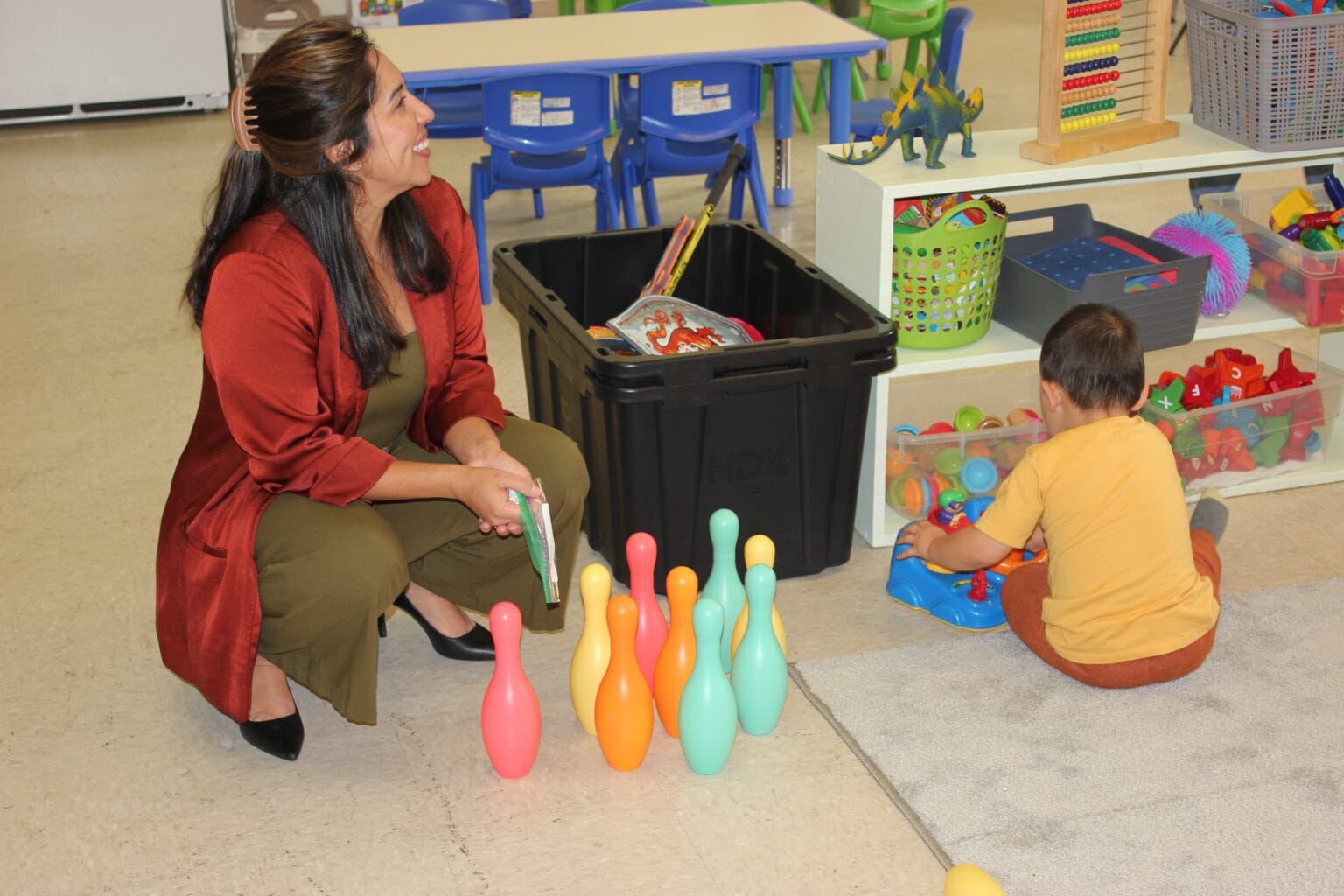Flooding put this Juneau child care center out of commission. Community support helped it reopen.

Emergency Child Care Center Opens After Flooding in Juneau

Introduction
Juneau, Alaska – An emergency child care center has opened in Juneau after severe flooding caused by a glacial outburst. The flooding not only affected homes but also forced the closure of Glacier Valley Kids, a state-licensed day care center. The center’s closure posed a significant challenge for parents who rely on child care services in the area. However, with the support of local organizations and the City and Borough of Juneau, a temporary child care center has been established in the vacant Floyd Dryden Middle School.
Impact on Families
The flooding caused by the glacial outburst affected the Benson family, who regularly used Glacier Valley Kids for their two-year-old son, Silas. The family’s house and their regular day care center were both impacted by the floodwaters. The Bensons, like many other parents in Juneau, rely on child care services to balance work and parenting responsibilities. The closure of Glacier Valley Kids would have resulted in the loss of child care spaces for 12 families, forcing them to leave the workforce.
Efforts to Reopen
The Southeast Alaska Association for the Education of Young Children, a nonprofit organization supporting early childhood caregivers and educators, recognized the importance of reopening Glacier Valley Kids. The organization provided emergency funding to replace damaged toys and supplies. Additionally, other day cares and schools in the area donated furniture, books, and toys. The City and Borough of Juneau offered the vacant Floyd Dryden Middle School building as a temporary location for the child care center. Carolina Sekona, the owner of Glacier Valley Kids, received a temporary license from the Alaska Department of Health and Social Services to operate the emergency child care center.
Return to Normalcy
The opening of the emergency child care center at Floyd Dryden Middle School marks a return to normalcy for families like the Bensons. Sekona and her team worked tirelessly to transform two empty classrooms into a safe and welcoming space for the children. Despite the challenges posed by the flood, Sekona was grateful for the quick response and support from the community. The children were able to rediscover familiar toys and belongings that were salvaged from the floodwaters, providing them with a sense of comfort and familiarity.
Conclusion
The establishment of the emergency child care center in Juneau highlights the importance of child care services in supporting families and the local workforce. The collaboration between local organizations, the government, and the community demonstrates a commitment to the Sustainable Development Goals (SDGs), particularly Goal 4: Quality Education, and Goal 8: Decent Work and Economic Growth. By providing accessible and reliable child care, communities can ensure the well-being of children and support parents in their professional endeavors.
SDGs, Targets, and Indicators
1. No Poverty
- Target 1.3: Implement nationally appropriate social protection systems and measures for all, including floors, and by 2030 achieve substantial coverage of the poor and the vulnerable.
- Indicator 1.3.1: Proportion of population covered by social protection floors/systems, by sex, distinguishing children, unemployed persons, older persons, persons with disabilities, pregnant women, newborns, work-injury victims, and the poor and the vulnerable.
2. Zero Hunger
- Target 2.2: By 2030, end all forms of malnutrition, including achieving, by 2025, the internationally agreed targets on stunting and wasting in children under 5 years of age, and address the nutritional needs of adolescent girls, pregnant and lactating women, and older persons.
- Indicator 2.2.1: Prevalence of stunting (height for age <-2 standard deviation from the median of the World Health Organization (WHO) Child Growth Standards) among children under 5 years of age.
4. Quality Education
- Target 4.2: By 2030, ensure that all girls and boys have access to quality early childhood development, care, and pre-primary education so that they are ready for primary education.
- Indicator 4.2.1: Proportion of children under 5 years of age who are developmentally on track in health, learning, and psychosocial well-being, by sex.
5. Gender Equality
- Target 5.4: Recognize and value unpaid care and domestic work through the provision of public services, infrastructure, and social protection policies and the promotion of shared responsibility within the household and the family as nationally appropriate.
- Indicator 5.4.1: Proportion of time spent on unpaid domestic and care work, by sex, age, and location.
8. Decent Work and Economic Growth
- Target 8.5: By 2030, achieve full and productive employment and decent work for all women and men, including for young people and persons with disabilities, and equal pay for work of equal value.
- Indicator 8.5.1: Average hourly earnings of female and male employees, by occupation, age, and persons with disabilities.
10. Reduced Inequalities
- Target 10.2: By 2030, empower and promote the social, economic, and political inclusion of all, irrespective of age, sex, disability, race, ethnicity, origin, religion, or economic or other status.
- Indicator 10.2.1: Proportion of people living below 50 percent of median income, by age, sex, and persons with disabilities.
11. Sustainable Cities and Communities
- Target 11.7: By 2030, provide universal access to safe, inclusive, and accessible, green, and public spaces, in particular for women and children, older persons, and persons with disabilities.
- Indicator 11.7.1: Average share of the built-up area of cities that is open space for public use for all, by sex, age, and persons with disabilities.
16. Peace, Justice, and Strong Institutions
- Target 16.1: Significantly reduce all forms of violence and related death rates everywhere.
- Indicator 16.1.1: Number of victims of intentional homicide per 100,000 population, by sex and age.
Analysis
1. The SDGs addressed or connected to the issues highlighted in the article are:
– No Poverty (SDG 1)
– Zero Hunger (SDG 2)
– Quality Education (SDG 4)
– Gender Equality (SDG 5)
– Decent Work and Economic Growth (SDG 8)
– Reduced Inequalities (SDG 10)
– Sustainable Cities and Communities (SDG 11)
– Peace, Justice, and Strong Institutions (SDG 16)
2. Specific targets under those SDGs based on the article’s content are:
– Target 1.3: Implement nationally appropriate social protection systems and measures for all.
– Target 2.2: End all forms of malnutrition and address the nutritional needs of specific groups.
– Target 4.2: Ensure access to quality early childhood development and pre-primary education.
– Target 5.4: Recognize and value unpaid care and domestic work.
– Target 8.5: Achieve full and productive employment and equal pay for work of equal value.
– Target 10.2: Empower and promote the social, economic, and political inclusion of all.
– Target 11.7: Provide universal access to safe, inclusive, and accessible public spaces.
– Target 16.1: Significantly reduce all forms of violence and related death rates.
3. Indicators mentioned or implied in the article that can be used to measure progress towards the identified targets are:
– Indicator 1.3.1: Proportion of population covered by social protection floors/systems.
– Indicator 2.2.1: Prevalence of stunting among children under 5 years of age.
– Indicator 4.2.1: Proportion of children under 5 years of age who are developmentally on track.
– Indicator 5.4.1: Proportion of time spent on unpaid domestic and care work.
– Indicator 8.5.1: Average hourly earnings of female and male employees.
– Indicator 10.2.1: Proportion of people living below 50 percent of median income.
– Indicator 11.7.1: Average share of the built-up area of cities that is open space for public use.
– Indicator 16.1.1: Number of victims of intentional homicide per 100,000 population.
4. Table presenting the findings:
| SDGs | Targets | Indicators |
|——————————–|——————————————————————————————————-|———————————————————————————————————|
| No Poverty (SDG 1) | Target 1.3: Implement nationally appropriate social protection systems and measures for all | Indicator 1.3.1: Proportion of population covered by social protection floors/systems |
| Zero Hunger (SDG 2) | Target 2.2: End all forms of malnutrition and address the nutritional needs of specific groups | Indicator 2.2.1: Prevalence of stunting among children under 5 years of age |
| Quality Education (SDG 4) | Target 4.2: Ensure access to quality early childhood development and pre-primary education | Indicator 4.2.1: Proportion of children under 5 years of age who are developmentally on track |
| Gender Equality (SDG 5) | Target 5.4: Recognize and value unpaid care and domestic work | Indicator 5.4.1: Proportion of time spent on unpaid domestic and care work |
| Decent Work and Economic Growth (SDG 8) | Target 8.5: Achieve full and productive employment and equal pay for work of equal value | Indicator 8.5.1: Average hourly earnings of female and male employees |
| Reduced Inequalities (SDG 10) | Target 10.2: Empower and promote the social, economic, and political inclusion of all | Indicator 10.2.1: Proportion of people living below 50 percent of median income |
| Sustainable Cities and Communities (SDG 11) | Target 11.7: Provide universal access to safe, inclusive, and accessible public spaces | Indicator 11.7.1: Average share of the built-up area of cities that is open space for public use |
| Peace, Justice, and Strong Institutions (SDG 16) | Target 16.1: Significantly reduce all forms of violence and related death rates | Indicator 16.1.1: Number of victims of intentional homicide per 100,000 population |
Source: alaskapublic.org








